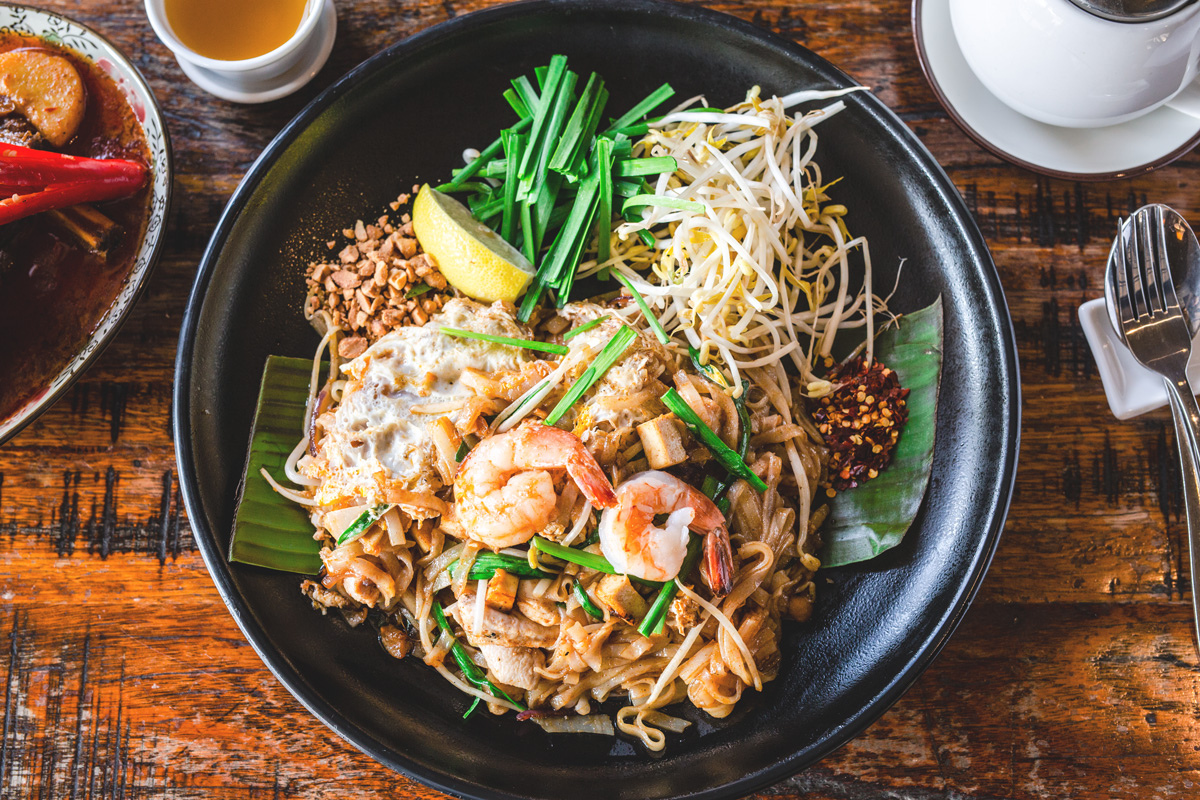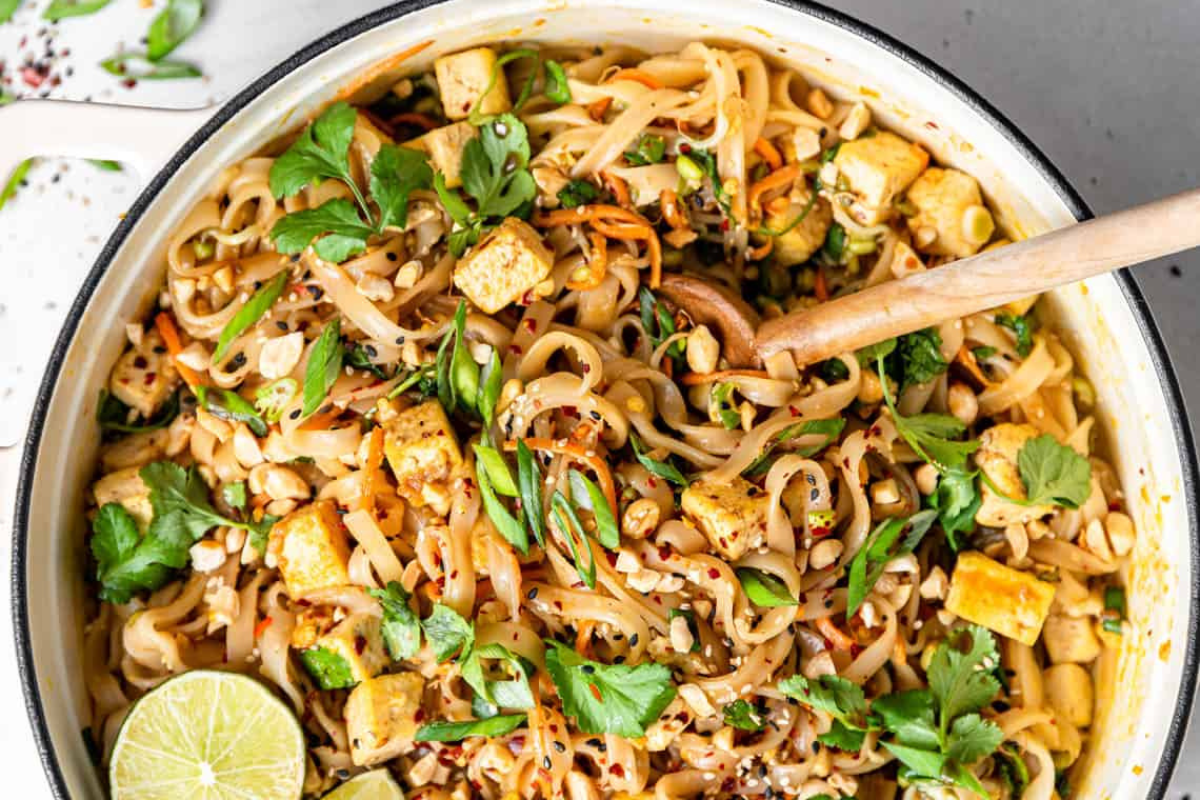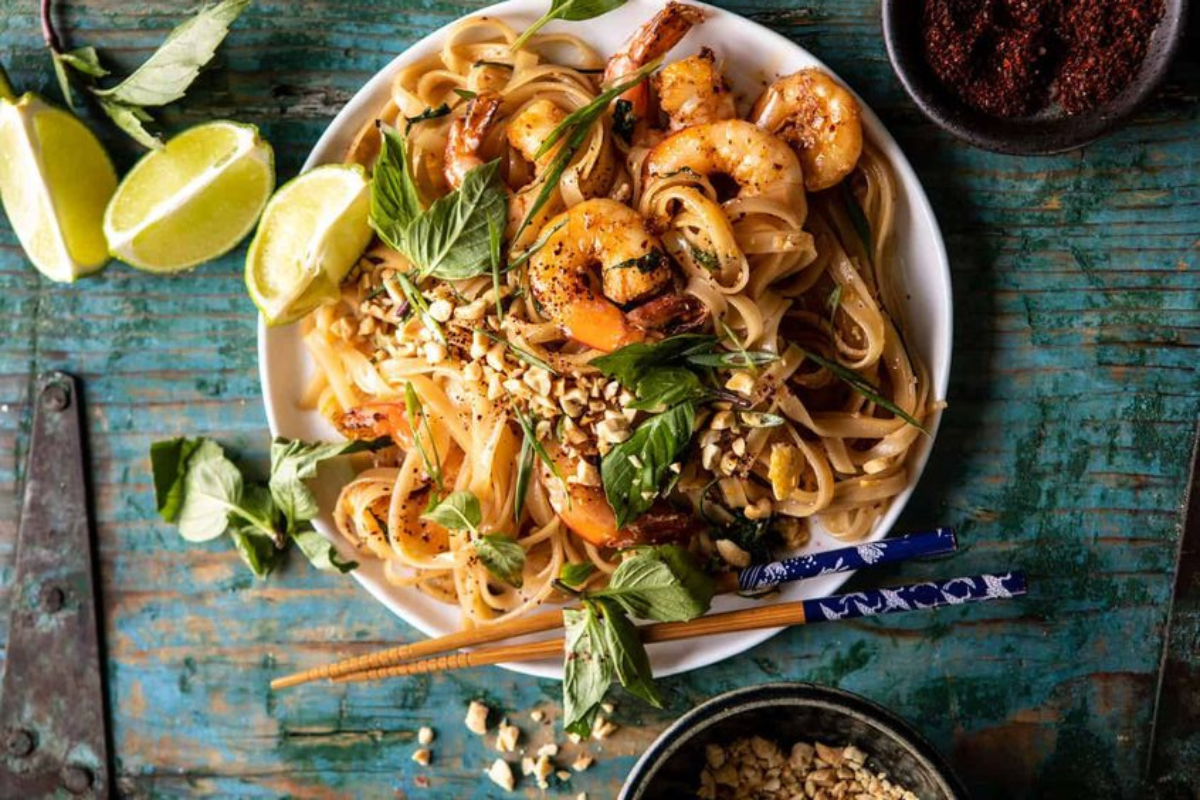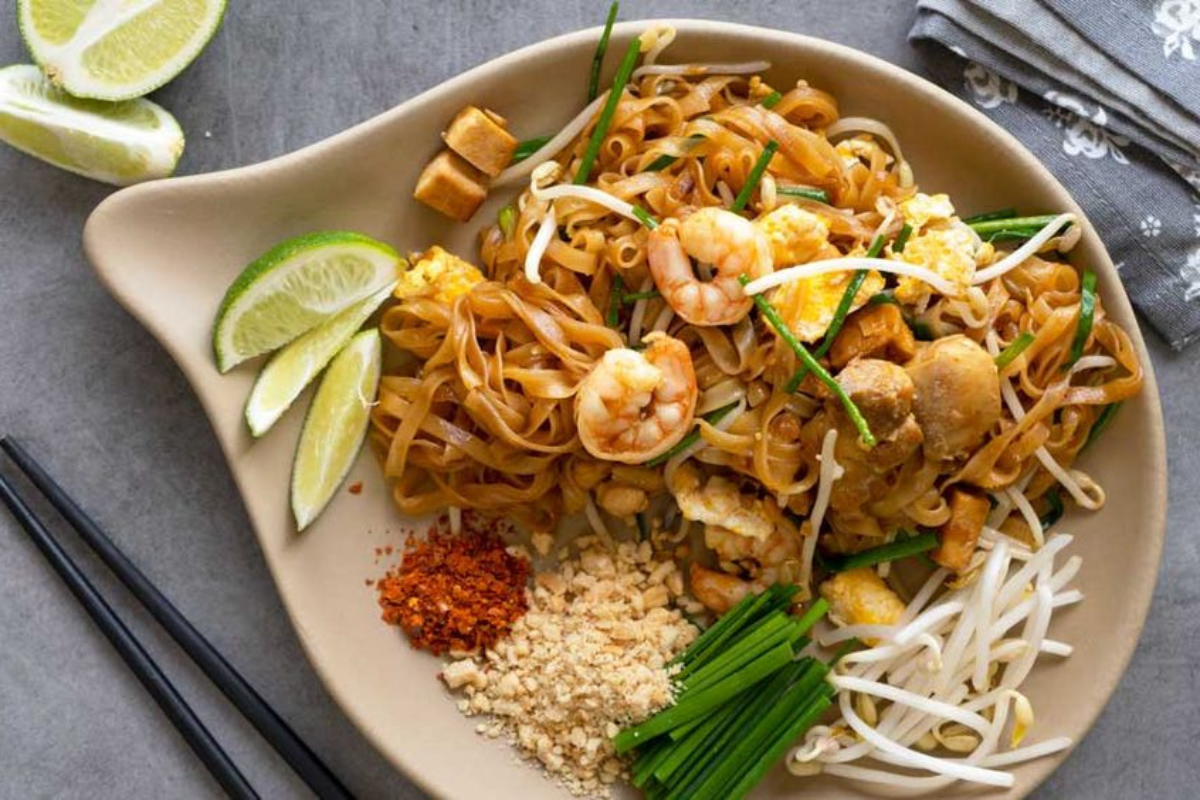The rhythmic clang of a wok against a searing flame, the intoxicating aroma of garlic and chilies dancing in the air, a vibrant plate of stir-fried rice noodles glistening with a sweet and savory sauce – these are the sensory hallmarks of Pad Thai, a dish synonymous with Thai cuisine. But Pad Thai’s story goes deeper than its undeniable deliciousness intertwining with Thailand’s social and political landscape.

Photo: Asian inspirations
Pad Thai, a stir-fried rice noodle dish with a symphony of sweet, savory, and sour flavors, is synonymous with Thai cuisine. The aroma of sizzling garlic and chilies wafting from street vendor carts beckons both locals and tourists alike. But Pad Thai’s story goes beyond its undeniable deliciousness. It’s a dish steeped in history, reflecting Thailand’s social and political landscape.
While the name translates to “Thai stir-fry,” Pad Thai’s origins are surprisingly recent. Unlike other iconic Thai dishes like Tom Yum or Green Curry, Pad Thai emerged in the 1930s during the reign of Prime Minister Phibun Songkhram. His government, focused on national building and promoting self-sufficiency, encouraged a shift away from rice consumption. Rice noodles, readily available and inexpensive, became a staple. Pad Thai, featuring these noodles stir-fried with protein, vegetables, and a unique tamarind-based sauce, was born. The dish’s name itself served as a nationalistic symbol, solidifying its place in Thai identity.
More than just a dish: The cultural significance of Pad Thai in Thailand
The creation of Pad Thai was about creating a dish that reflected Thailand’s abundance. The key ingredient, rice noodles, is a testament to the country’s rice culture. The inclusion of protein like chicken, shrimp, or tofu catered to different dietary preferences. Vegetables like bean sprouts and scallions added color and freshness. The star of the flavor profile, the tamarind sauce, brought a sweet and sour tang, a hallmark of Southeast Asian cuisine. Palm sugar added depth, while fish sauce provided a savory punch. Crushed peanuts, a finishing touch, offered a delightful textural contrast. Pad Thai, in its essence, was a celebration of Thai ingredients and flavors.

Photo: Simply Quinoa
Pad Thai’s journey wasn’t without regional variations. Northern Thailand’s version often features a thicker, meatier sauce with chilies for a touch of heat. Vendors in the south may incorporate shrimp paste for a richer umami flavor. Isan, Thailand’s northeastern region, boasts a spicier Pad Thai with dried chilies and fermented fish sauce. These variations highlight the adaptability of the dish and its ability to incorporate local flavors.
Beyond its deliciousness and adaptability, Pad Thai holds a special place in Thai culture. It’s a street food enjoyed by people from all walks of life. Vendors often have their own secret family recipes, passed down through generations, creating a sense of tradition and community. The rhythmic clanging of woks and the fragrant smoke rising from street carts are sights and smells that evoke a sense of Thai life.
However, Pad Thai’s popularity as a tourist attraction has led to some concerns. The pressure to cater to a wider audience can result in a dumbing down of flavors or the use of lower-quality ingredients. There’s a movement towards seeking out authentic Pad Thai experiences, venturing beyond tourist areas to find vendors who stay true to the traditional recipe.

Pad Thai is a cultural icon. It represents Thailand’s resourcefulness, its embrace of local ingredients, and its ability to create something unique and delicious. Whether enjoyed at a bustling night market or a local restaurant, Pad Thai offers a glimpse into the heart of Thailand. So, next time you savor that plate of Pad Thai, take a moment to appreciate its unexpected origins, its regional variations, and its enduring role in Thai culture.
Pad Thai: A symphony of flavors across Thailand
Pad Thai, Thailand’s beloved stir-fried noodle dish, isn’t a monolith. While the core ingredients – rice noodles, eggs, vegetables, and a tamarind-based sauce – remain constant, regional variations paint a vibrant picture of Thailand’s diverse culinary landscape. Let’s embark on a flavor journey to explore some of the most distinct Pad Thai styles:
Northern Thailand’s cooler climate and mountainous terrain influence its Pad Thai. Here, the dish takes on a heartier character. The sauce is often thicker and richer, boasting a deeper brown color from the addition of fermented soybean paste. Chilies are more liberally used, adding a pleasant kick that warms the body. Vegetables like cabbage and green beans become more prominent, providing a satisfying crunch. Protein options may include northern Thai specialties like sausage or minced pork, showcasing the region’s unique ingredients.
As you travel south, the influence of the ocean becomes evident in Pad Thai variations. Vendors in coastal regions often incorporate shrimp paste into the sauce, adding a distinctive umami depth that complements the sweetness of palm sugar. Fresh seafood like squid or mussels might replace the usual chicken or shrimp, reflecting the abundance of the sea. Some southern versions may even feature a touch of coconut milk for a hint of creaminess.

Isan, Thailand’s northeastern region, is known for its fiery cuisine, and Pad Thai is no exception. Here, the dish gets a significant heat boost with the addition of dried chilies and fermented fish sauce. The tamarind sauce may be reduced, allowing the chili’s fiery character to shine through. Vegetables like green beans and long beans are commonly used, adding a crisp counterpoint to the heat. Isan Pad Thai is a true testament to the region’s love for bold flavors.
Central Thailand, including Bangkok, is the heart of the country and the birthplace of Pad Thai. Here, you’ll find the classic version that most Westerners are familiar with. The sauce is a harmonious balance of sweet, sour, and savory, with a focus on the tang of tamarind and the depth of fish sauce. Bean sprouts, scallions, and tofu are common accompaniments, adding freshness and a textural contrast. This version is a great starting point for those new to Pad Thai, showcasing the dish’s core flavors without overpowering them.

